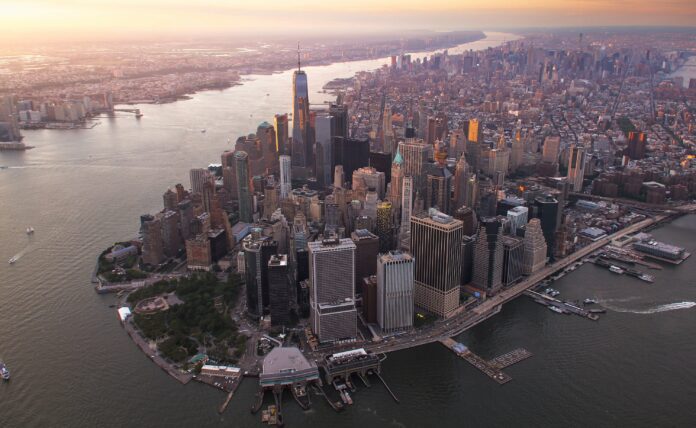New York City recently released the Financial District and Seaport Climate Resilience Master Plan. Projected to cost between $5-$7 billion, the project aims to protect lower Manhattan from the growing threat of flooding and rising sea levels by adding a two-level protective esplanade that would follow the coastline of the East River up to 200 feet from its existing shore.
According to a press release, more than 1 million people live in, work in, or commute through the Financial District South Street Seaport neighborhoods. The project, which has been in the planning stages since 2016, won’t begin construction for at least 5 years.
In addition to protecting Lower Manhattan residents and visitors, the esplanade would create an additional public space for the neighborhood, complete with green space, walkways, and water shoreline access.
NYC public officials noted the importance of upgrading infrastructure to protect the city from the growing threats of climate change.
“This Plan for a protected and resilient waterfront in Lower Manhattan will help us fully confront the urgent and accelerating threat of climate change,” said Mayor Bill de Blasio. “A recovery for all of us must ensure families, businesses, and communities in Lower Manhattan are able to withstand extreme weather and rising sea levels, which this vision guarantees.”
“New York City’s future depends on us planning for the effects of coastal storms and sea level rise in vulnerable places,” said NYC Parks Commissioner Gabrielle Fialkoff. “This new master plan outlines a vision for transforming the shoreline in the Financial District and Seaport that prioritizes the need for public access and climate planning along Lower Manhattan’s waterfront.”
The Financial Cost of Climate Change
In 2012, Hurricane Sandy devastated New York and Jew Jersey, destroying more than 600,000 homes. FEMA authorized more than $14.1 billion to clear the wreckage, and more than $1 billion to over 117,000 affected individuals in New York state, but it took years to fix all of the damage. In addition to causing billions of dollars in damage, 44 New York City residents tragically died.
In 2021, New York was also hit by Tropical Storm Henri in August and Hurricane Ida in September, with both storms collectively causing hundreds of millions of dollars in damages.
Critics of NYC’s $5- $7 Billion plan note the plan’s high dollar figure, but supporters argue that the cost of plan pales in comparison to the cost of doing nothing. According to NYC officials, if nothing changes, the city can expect regular flooding to cause $20.3 billion in total damages from 2021 to 2100, but that number doesn’t even count costs to repair city services like the subway and the electrical grid.
NYC’s real estate sector would also take a hit, as the city’s commercial and residential buildings would incur $2.5 billion in damages, while local businesses located near the coastline would see more than $15 billion in losses.
Tyler graduated from Virginia Commonwealth University in 2017 with a Bachelor's degree in Urban and Regional Studies. Currently based in Los Angeles, he works as a freelance content writer and copywriter for companies in real estate, property management, and similar industries. Tyler's main professional passion is writing about critical issues affecting big and small cities alike, including housing affordability, homelessness, inequality, and transportation. When he isn't working, he usually plans his next road trip or explores new neighborhoods and hiking trails.



